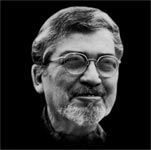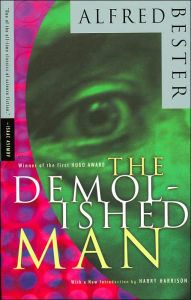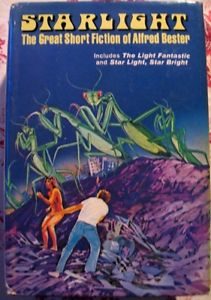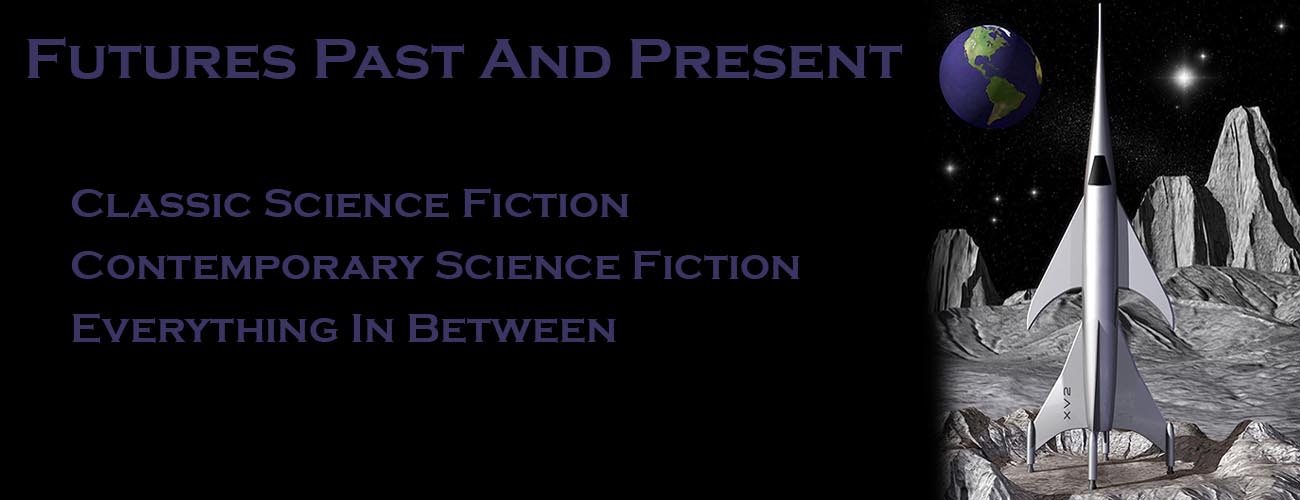 Alfred Bester was born on this date (December 28) in 1913 in New York City. He was in many ways one of the most brilliant and innovative science fiction writers of the 20th Century, having an influence that was disproportionate to his output. His novel The Demolished Man won the first Hugo Award for Best Novel. Dealing with telepathy, it was a wild and stylistically innovative book. The Psy-Corps in Babylon 5 was modeled after portions of this novel, and Walter Koenig’s character in the show was named Alfred Bester, an obvious homage.
Alfred Bester was born on this date (December 28) in 1913 in New York City. He was in many ways one of the most brilliant and innovative science fiction writers of the 20th Century, having an influence that was disproportionate to his output. His novel The Demolished Man won the first Hugo Award for Best Novel. Dealing with telepathy, it was a wild and stylistically innovative book. The Psy-Corps in Babylon 5 was modeled after portions of this novel, and Walter Koenig’s character in the show was named Alfred Bester, an obvious homage.
One of the reasons Bester might not be well remembered today, at least among fans who aren’t a certain age, is that he wrote for a variety of media, including comics and radio in the 1940s. He did his most influential work in the 1950s. I’m sure most of you are familiar with some of his comics work:
In brightest day and blackest night,
No evil shall escape my sight,
Let those who worship evil’s might,
Beware of my power, Green Lantern’s light.
Yes, Alfred Bester created the Green Lantern oath. During the 1960s, Bester was senior editor for Holiday magazine and his science fiction output dropped to zero. After the magazine folded in the 1970s, Bester returned to writing science fiction, but he never achieved the success, commercially or critically, that he had during the 1950s. He died in 1987.
 As an observance of Bester’s birthday, I reread his classic short story “Fondly Fahrenheit”. This is the story Isaac Asimov would have written if he had chucked the Three Laws and dropped acid while working on the stories that went into I, Robot.
As an observance of Bester’s birthday, I reread his classic short story “Fondly Fahrenheit”. This is the story Isaac Asimov would have written if he had chucked the Three Laws and dropped acid while working on the stories that went into I, Robot.
“Fondly Fahrenheit” is the tale of a man and his android who are constantly on the run. Androids aren’t supposed to harm people, but this android seems to randomly kill. Of course the killings aren’t really random.
The thing that makes the story stand out is the way it’s told. The point of view changes from third person to singular and plural first person, with the first person viewpoints changing between the man and the android, often from one sentence to the next. I know that probably sounds confusing, and when I first read the story at 14, it was until I realized what Bester was doing. But the story stayed with me so strongly that I haven’t reread it until today.
 My appreciation for the brilliance of Bester’s work has only increased through the years. Rereading “Fondly Fahrenheit” today made me remember Star Light, Star Bright, a massive collection of Bester’s work that was published in the late 1970s. He included a number of autobiographical portions which I found highly enlightening about early science fiction. Among the stories he tells are what it was like to write for John W. Campbell.
My appreciation for the brilliance of Bester’s work has only increased through the years. Rereading “Fondly Fahrenheit” today made me remember Star Light, Star Bright, a massive collection of Bester’s work that was published in the late 1970s. He included a number of autobiographical portions which I found highly enlightening about early science fiction. Among the stories he tells are what it was like to write for John W. Campbell.
I’ll see if I can find my copy and give it another read in the new year.

I just read Bester for the first time, THE STARS MY DESTINATION. It was good stuff.
That’s the Bester novel I haven’t read. I need to correct that oversight this coming year.
It’s starts off very noir and gets very scifi by the end. An interesting mix.
Fondly Fahrenheit has long been a main contender for my favourite Bester short.
Sometime in the late-60s, when I was growing out of children’s fiction (Paddington, Stig of the Dump, etc), the first grown-up’s book I read (beginning to go through my father’s bookcase) was Tiger! Tiger! I’ve never really stopped thinking of it as the greatest SciFi novel ever written. All reet!